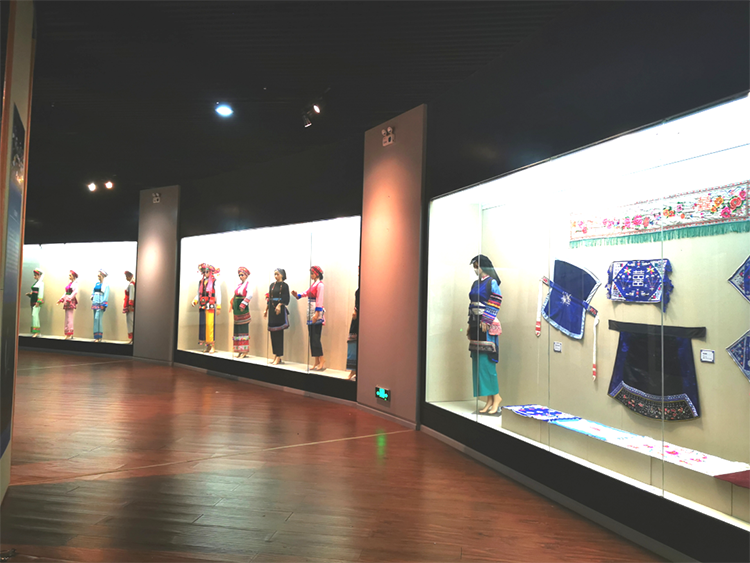Discover Yi Culture at Bijie Museum: Yelang Heritage & Red History
Introduction:
Nestled among the mountains of northwest Guizhou, Bijie City Museum stands like a dense history book, recording this region’s story from prehistory to modern times. Home to more than 12,000 artifacts, the museum is a cultural treasury where Yi ethnic traditions, remnants of the ancient Yelang kingdom, and Red Army revolutionary memories meet. Enter this national Level-3 museum and begin a time-traveling journey to feel Bijie’s unique cultural pulse.
1. Core Features and Positioning:
A one-line summary:
Bijie City Museum is a comprehensive cultural repository blending Yi culture, Yelang relics, and revolutionary history.
Unique selling points:
As the major municipal museum in northwest Guizhou, it highlights Yi collections while focusing on research into the Yelang legacy and Red Army narratives—making it the primary gateway to understanding Bijie’s multicultural identity.
2. History, Architecture, and Status:
Founding background:
Established in 1986 during a growing national focus on local heritage preservation, the museum was created to systematically organize Bijie’s history and ethnic legacy.
Architectural features:
The modern, imitation-ancient building occupies about 6,000 square meters. Its exterior incorporates Yi totem motifs, while the interior follows a “cultural lineage” layout with three main permanent exhibition halls.
Institutional status:
Upgraded to a national Level-3 museum in 2020, it is Bijie City’s only comprehensive museum and an important center for Yelang studies.
3. Key Exhibits and Experiences:
Recommended highlights:
– Yi lacquered painted ritual plate (Qing dynasty): A national-level artifact decorated in black, red, and yellow with solar patterns and clan emblems—an evocative survival of Yi sacrificial traditions.
– Yelang bronze arrowheads (Warring States period): Excavated from the Hezhang Kele site, these pieces confirm the martial craftsmanship of the ancient Yelang polity.
– Red Army cloth slogan (1936): A rural cloth banner reading ‘Beat landlords, divide the land’—a rare tangible witness to Guizhou’s revolutionary history.
Exhibition highlights:
– Permanent Hall “Bijie Historical Culture“: A chronological display from the Paleolithic to modern archaeological finds, emphasizing the mysterious and debated Yelang culture.
– “Yi Culture” interactive zone: A reconstructed Yi dwelling, traditional costumes for try-on, and hands-on exhibits that let visitors experience Torch Festival customs.
– “Red Bijie” immersive scene: Sound, light, and projection technology recreate moments like the historic “Chicken-Crow Three-Province” meeting, delivering strong emotional impact.
Learning outcomes:
Visitors can gain a systematic understanding of Yi subgroups and distribution, the Yelang kingdom’s relationship with the Han dynasty, and key Red Army campaigns in Bijie.

4. Environment and Atmosphere:
Typical visitors:
Cultural enthusiasts and student study groups dominate, alongside middle-aged and older travelers tracing revolutionary sites.
Atmosphere:
Ethnic exhibition halls are vivid and colorful; the history galleries feel solemn and reflective; the red history area is stirring and patriotic.
Spatial layout:
The three themed halls form a ‘pin’ (品)-shaped arrangement with clear visitor flow. The central courtyard features a Yi-style relief wall—an attractive photo spot.
5. Practical Visiting Tips:
Suggested visits:
– Quick route (1 hour): Head straight to the museum highlights → Yelang bronze display → Red slogan hall → Yi costume gallery.
– In-depth route (3 hours): Follow the historical timeline and join the Yi-script calligraphy experience in the second-floor education area.
Best for:
Family cultural introductions, friends checking off Red history landmarks, and scholars researching Yelang artifacts.
Combo recommendations:
Pair this museum with the nearby Former Headquarters of the Guizhou Anti-Japanese Salvation Army or Zhijin Cave for a full-day cultural and natural itinerary.
6. Local Tips:
Hidden gem:
A second-floor corner Yi silverware display is often overlooked; the bridal headdress set there shows exquisite workmanship.
Pitfalls to avoid:
Closed every Monday; maintain quiet in the Red Hall; there is no on-site restaurant, but a beloved Yi mutton noodle shop is a 10-minute walk away.

7. Practical Information:
– Address: No. 518 Biyang Avenue, Qixingguan District, Bijie City (Bijie City Museum)
– Opening hours: 09:00–17:00 (last entry 16:30); closed on Mondays
– Admission: Free, exchange ID for a ticket; groups should reserve three days in advance
– Transport: Bus lines 1 and 8 to ‘City Museum’ stop; free parking for private cars
– Services: Chinese and English floor plans; audio guides available (20 RMB) with English; full accessibility.
Conclusion:
Bijie City Museum may not match the scale of provincial museums, but its vivid ethnic character and layered historical narratives make it a key to understanding northwest Guizhou. When you trace the carved lines on a Yi lacquer plate, study the patina on a Yelang bronze, or stand before a Red Army banner, the mountain city’s history comes alive. Give this museum half a day on your Guizhou itinerary—you’ll find it well worth the time.


